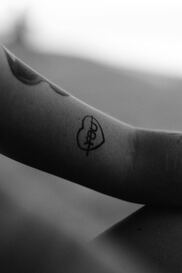|
Love addiction is real. Like any addiction, it’s a quiet and shame filled place to be. Doing things in the dark and fearing the truth being exposed. It took me years before I realized and acknowledged my own love addict habits, along with those who enabled me to keep my addiction going. I thought the people I chose to interact with were the problem, and that I was innocent in it all. I would get angry at them when they would reject me versus taking the time to look at how I was contributing to the situation and my unhealthy habit. My habit which looked like attaching myself to faux partners who would love-bomb me, then ghost me, then love-bomb me again. With each love-bomb, I’d get a hit of dopamine. And with each ghosting, the withdraw (depression and anxiety) would kick it and I would start obsessing and trying to seek relief from the craving by chasing, calling, texting, and lowering myself so that I would again get a fix. And it would come. Days, weeks, sometimes months later.
Looking back, I can see that misery loves company, or in other words, like attracting like. The people who I became addicted to also struggled with their own addictions. Often alcohol. Little did I realize how we were in a dance that involved us both being unwell. I know now that we’re only as sick as our secrets, and we both had some. I allowed myself and others to swim in a sea of secrets that kept us both in a pattern of dis-ease, rejection and longing. I spent years working as an in-patient substance abuse counselor, but it would take years before I fully understood my patterns, attachment style, and what was happening to me. Learning about attachment styles was helpful but it became even more helpful when I reframed my attachment style from an addiction perspective. I would fall into an anxious attachment style when I didn’t get my fix from the object of my desire. At times, I would also punish lovers with a brief form of the silent treatment in hopes of causing them to feel anxious about losing me. That of course, never worked because of their own avoidant behavior. They struggled with emotional intimacy, so removing myself, denying them my attention had no effect. But trust and believe when I would give in and contact them again, I would again get the fix I craved, and the depression and anxiety would subside. It took years of inner reflection and work to get to the point of seeing this pattern. Disrupting the pattern and not engaging in it would take even more years of work and practice. After acknowledging my addictive behavior, I had to learn my triggers. Those came in the form of music, memories, tv shows, hell even with some types of food and of course alcohol. Getting comfy with feeling the “craving” for contact with the object of my affection has been a saving grace. Or in other words, feeling the desire for contact and sitting with it. Along with sitting with the craving, saying to myself “I’m in relapse mode”, has been another helpful tool. Acknowledging the presence of the craving helps me to see that I am at risk of doing something that will harm me. And it’s in those moments that I tell myself, “Today, I will not harm myself. I’m choosing to not harm myself”. And then I sit with the craving and trust that it will pass. I also remind myself that getting triggered is normal and that it’ll be okay. It’s easier to do 10 years after realizing I had an addiction versus a year in. I’ll admit that I’ve relapsed more than once. With each new object of desire comes the possibility of a relapse. But with each relapse, I’ve become stronger, wiser and better able to sit with the cravings and to avoid doing something that will harm me. My oldest object of affection/addiction was by far the hardest to kick. We had 20 plus years of history. He had also struggled with alcoholism, so the two of us being attracted to each other because of our shared addictive characteristics made sense. To this day, I still get cravings for his attention and affection. Again, 20 plus years. But when the craving kicks in after being triggered, I follow my plan: acknowledge I’m in relapse mode, sit with the cravings, and remind myself that craving will pass. And make a conscious choice to not hurt myself by contacting him. All the stereotypical coping skills have also been helpful…connection to God/Source, exercise, affirmations, nurturing my furry babies and plants, journaling, rest, listening to music, creating art, have all helped with redirecting my attention towards other sources of pleasure. At the end of the day, pleasure is what I crave from the object of my affection. So finding ways to find pleasure without his attention has been both helpful and healing. I’ve discovered that I do not need anyone outside of myself to create pleasure and joy. And that I can self-soothe when I get triggered and am in relapse mode. Again, everything I sought out through the objects of my affection, I can provide for myself. And every day, I must consciously choose not to hurt myself by doing the things that prevent me from relapsing and hurting myself. If you’re struggling with addiction or unhealthy relationships patterns, please know that you are not alone, and that help is available. Image by Peter Bucks/Unsplash
0 Comments
Leave a Reply. |
AuthorChristina is a Psychotherapist in private practice. She supports residents in both Kansas and California. Archives
April 2024
Categories |


 RSS Feed
RSS Feed